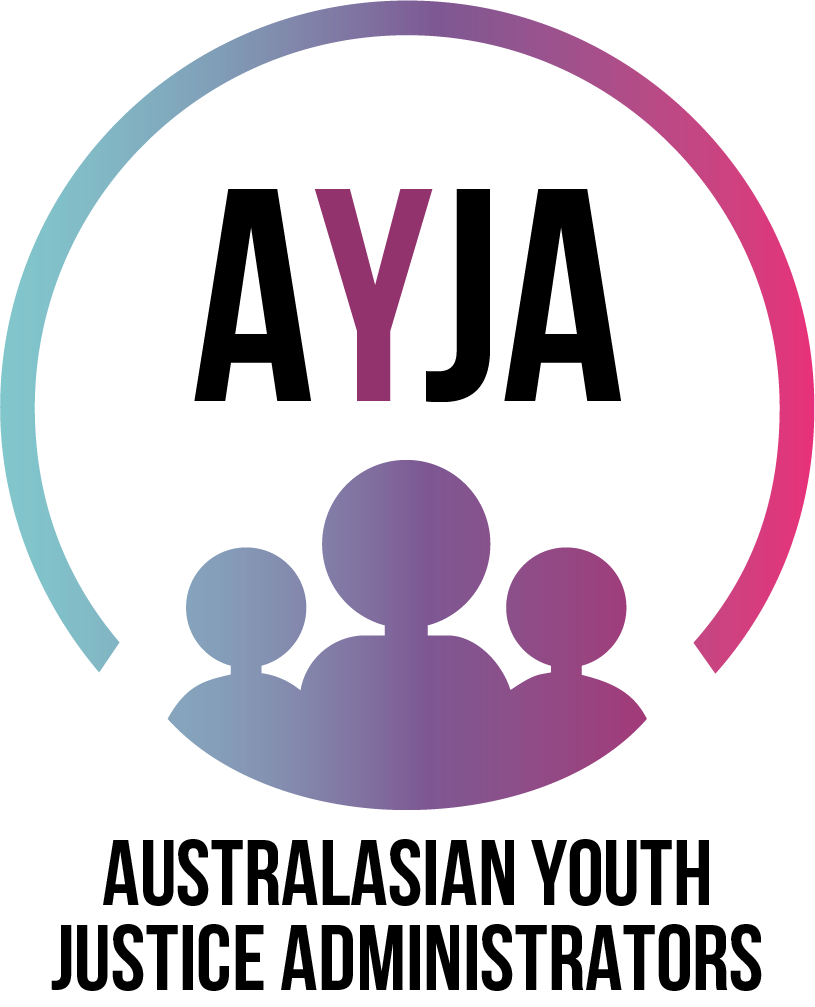Reports of Interest
Reports of Interest from 2021
Australia’s Youth (AIHW)
The Australia’s Youth: In Brief report presents key findings from the main web report, Australia’s youth. Both reports examine the most recent data available across 7 broad areas, or domains. These domains are based on the AIHW’s people-centred data model— health, education, social support, income and finance, employment, housing, and justice and safety health, education, social support, income finance, employment, housing, and justice and safety.
This model acknowledges that although the different domains are reported separately, they are in fact inter-related—a young person’s development and wellbeing occurs within the dynamic influences of the family, community and broader society.
The Australia’s Youth report, the Australia’s Youth: In Brief report and the Media Release are available on the AIHW website www.aihw.gov.au

Commission for Children and Young People – Our Youth Our Way (VIC)
This report presents the findings and recommendations of the Koori Youth Justice Taskforce and the Commission’s systemic inquiry, Our youth, our way. The Koori Youth Justice Taskforce was a partnership project with the Department of Justice and Community Safety, and considered all Aboriginal children and young people in contact with Youth Justice from October 2018 to March 2019. The Commission commenced its systemic inquiry in May 2019.
The inquiry sought to understand the lived experiences of Aboriginal children and young people in Victoria and the factors contributing to their over-representation in the youth justice system with 93 children and young people sharing their stories (some of which are included in the report).
The Summary Report, Full Report and Media Release are available on the CCYP website www.ccyp.vic.gov.au
Ombudsman Report – Strip Searches Conducted After Incident at Frank Baxter Youth Justice Centre (NSW)
This Report was made under s 31 of the Ombudsman Act 1974 and sets out the findings and recommendations made in the Final Report to the Department of Communities and Justice (DCJ) on 30 April 2021, after an investigation into three strip searches conducted at Frank Baxter Youth Justice Centre. The Report also addresses a number of related issues, such as the appropriateness of strip searching young people in youth justice centres, as well as the need for a digital record of all searches requiring the removal of some or all of a young person’s clothing.
The report is available on the Ombudsman NSW website www.ombo.nsw.gov.au
Reports of Interest from 2020
ANZSOG Research Insights – 10 Pillars of Youth Justice
A new paper from ANZSOG’s Research Insights Series – 10 Pillars of Youth Justice, prepared by independent consultant and youth justice expert Lisa Ward, examines the best available evidence and outlines the key practical imperatives to inform the design of youth justice systems.
The paper originated from the first of ANZSOG’s series of Problem Solving Workshops.
Youth justice was chosen as a policy area with which every Australasian jurisdiction is struggling, and the workshop brought together a wide range of youth justice stakeholders including former elected officials, independent watchdogs and administrators, to explore how evidence and public discourse could be brought into closer alignment in the interests of more effective public policy.
The paper is intended to summarise current knowledge in an applied manner and articulate the rationale for why we do the things we do. It also provides a framework on which individual jurisdictions can build to assess their performance against the evidence.
The paper is available on the ANZSOG website www.anzsog.edu.au
Inspection of Six Youth Justice Centres in NSW
The Inspection of Six Youth Justice Centres in NSW report examined the safety and wellbeing of young people in custody as well as the security and management of every youth justice centre (YJC) in NSW. There are six YJCs in NSW that accommodate young people aged between 10 and 21 years: Reiby; Cobham; Frank Baxter; Acmena; Orana; and Riverina. Three are located within the greater Sydney region and three are located in regional NSW. Reiby YJC accommodates young women and girls, and boys under the age of 15 years. The report found that each centre has strengths and weaknesses and made 51 recommendations aimed at improving the conditions and treatment of young people in custody and enhancing staff professional practice.
The Inspection of Six Youth Justice Centres in NSW report was tabled in NSW Parliament and published in December 2020. The report and the Media Release are both available on the Inspector of Custodial Services website www.inspectorcustody.new.gov.au
Insight into Contemporary Young Offender Behaviour in Victoria: A Dark Road of Growing Up
The Insight into Contemporary Young Offender Behaviour in Victoria report presents the findings from the first qualitative study of a sample of 15 Victorian young people who were serving a custodial sentence in a youth justice facility for violent motor vehicle offence(s).
The research aims to understand young people’s backgrounds and motivations for engaging in violent motor vehicle theft. The paper discusses implications for youth policing, youth services, education and mental health, and provides participants’ perspectives on interventions to assist in preventing other young people engaging in crime. The report is available on the APO website www.apo.org.au
Working with At-Risk Culturally and Linguistically Diverse Young People in Australia: Risk Factors, Programming, and Service Delivery (Centre for Forensic Behavioural Science)
The Working with At-Risk Culturally and Linguistically Diverse Young People in Australia: Risk Factors, Programming, and Service Delivery study aimed to explore:
- the unique sociocultural factors that may affect a CALD young person’s ongoing contact, and interactions with the justice system
- the evidence for culturally responsive justice programming in Australia
- how service providers can best address the needs of justice-involved CALD young people.
Youth Justice in Australia: Themes from Recent Inquiries (AIC)
The administration of youth justice systems in Australia is a state and territory responsibility. Almost all states and territories have in recent years undertaken extensive reviews of their youth justice systems. In addition, various oversight bodies (such as ombudsmen, inspectors of custodial services, children’s guardians and advocates), Commonwealth agencies (such as the Australian Law Reform Commission), and non-government organisations (such as Amnesty International) have also completed reviews and published reports in this area. The catalysts for some of these reviews were incidents in youth justice detention centres which captured national (and international) attention.
A key theme arising from many of these reviews is the need for youth justice detention to be a measure of last resort. Detention, especially for young people who have been victims of abuse and neglect or who have mental illness and intellectual disabilities, is often detrimental and has little benefit in reducing recidivism.
The Youth Justice in Australia: Themes from Recent Inquiries report explores this and other key themes arising from the recent reviews into Australian youth justice systems. The report is available for free download on the AIC website www.aic.gov.au

Responding to Adolescent Family Violence: Findings from an Impact Evaluation (AIC)
Despite growing recognition of the prevalence of and harms associated with adolescent family violence, the evidence base of how best to respond remains underdeveloped.
The Responding to Adolescent Family Violence: Findings from an Impact Evaluation paper describes the findings from the outcome evaluation of the Adolescent Family Violence Program. The results show that the program had a positive impact on young people and their families, leading to improved parenting capacity and parent–adolescent attachment. However, there was mixed evidence of its impact on the prevalence, frequency and severity of violent behaviours.
The evaluation reaffirms the importance of dedicated responses for young people who use family violence, and the potential benefits, and limits, of community-based programs. The paper is publicly available on the Australian Institute of Criminology website www.aic.gov.au
Training Centre Visitors Unit report entitled ‘Great Responsibility: Report on the 2019 Pilot Inspection of the Adelaide Youth Training Centre (Kurlana Tapa Youth Justice Centre)
The Training Centre Visitors Unit report is the outcome of the first official inspection of the Kurlana Tapa Youth Justice Centre, conducted in November 2019. It represents the culmination of two-years of work.
The voices of young people and the centre’s staff make for an honest account of life in the centre and are explored in detail in the report.
The findings consider whether the rights of the detained children and young people are being met and to what extent the centre’s environment contributes to its objectives of rehabilitation and reintegration of these young people back into the community.
The report contains 10 wide-ranging recommendations on how the centre can better provide for the needs of the young people, including a review as to whether there is an appropriate balance between a model based on security and correction on one hand and one that supports rehabilitation and reintegration on the other. The report is publicly available on The Guardian for Children and Young People in Care website www.gcyp.sa.gov.au

Changing Direction: Mental Health Needs of Justice Involved Young People in Australia 2020 (UNSW – The Kirby Institute)
The research underpinning the Changing Direction: Mental Health Needs of Justice-Involved Young People in Australia report involved QCMHR Forensic Mental Health Group members Carla Meurk, Megan Steele, Jacklyn Schess, and Ed Heffernan. The report’s authors found that justice involved young Queenslanders and Western Australians experienced higher levels of psychological distress and suicidality than their counterparts in the community.
This report presents findings on the mental health of 465 justice-involved young people. There were consistent associations between experiences of abuse, head injury, psychological distress, and mental disorders. The findings highlight the importance of delivering trauma-informed care to young people who are justice involved, or who are at risk of justice system involvement, and the need for services and interventions that aim to prevent or address the abuse that they may experience. The report is publicly available on the Kirby Institute website www.kirby.unsw.edu.au
Reports of Interest From 2019
Children’s Rights Report 2019 – In Their Own Right (Australian Human Rights Commission)
Children’s Rights Report 2019 – In Their Own Right was launched in February 2020. It is intended to help hold Australian governments to account for the wellbeing of our children, now and into the future. It makes recommendations to improve child wellbeing in Australia and honour our obligations to Australian children under the Convention on the Rights of the Child. The report is publicly available on the Australian Human Rights website www.humanrights.gov.au
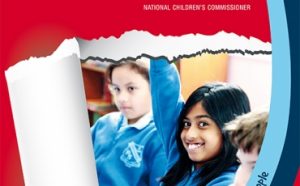
A Blueprint for Change Adapting the Lessons of the Spanish Youth Justice System to the Northern Territory Report of Diagrama visit October 2019 (NT)
In October 2019, the Department of Territory Families (Territory Families) funded the Aboriginal Medical Services Alliance NT (AMSANT) to host a visit by representatives from Diagrama Foundation (Diagrama). Diagrama is an international not-for-profit organisation based in Spain that runs youth custodial facilities. Diagrama runs more than 35 re-education (detention) centres for young people across different regions of Spain, relying on our therapeutic model in these and other services. The Diagrama model has earned the Diagrama Foundation Special Consultative Status to the United Nations and sees low rates of recidivism. The Diagrama Foundation Report is publicly available on the Danila Dilba Health Service website www.dhhs.org.au
Ministerial Review into the Riot at Frank Baxter Detention Centre 21 and 22 July 2019 (NSW)
The Shearer Report reviewed a serious incident at the Frank Baxter Youth Justice Centre and was released in August 2019. The report makes 63 recommendations. The report is publicly available on the YJ NSW website www.juvenile.justice.nsw.gov.au
The Health of Australia’s Prisoners 2018 (AIHW)
AIHW released The Health of Australia’s Prisoners 2018 on 30 May 2019. Currently, AIHW is in discussions with AYJA about undertaking a similar study with young people in youth justice detention. This report was provided to AYJA by AIHW as an interest piece. The report is publicly available on the AIHW website www.aihw.gov.au
People in prison usually come from disadvantaged backgrounds, with poorer physical and mental health than the general population. They are less likely to have accessed health care services, and more likely to have a history of risk behaviours. Most people in prison are there for short periods, and many cycle through prison and the community multiple times. So, the health of people in prison is public health.
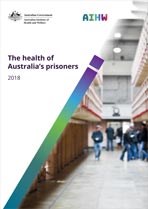
Commission Initiated Review of Allegations Regarding Bimberi Youth Justice Centre Report (ACT)
The ACT Human Rights Commission report the Commission Initiated Review of Allegations Regarding Bimberi Youth Justice Centre report was released on 16 April 2019. The report and the ACT Government Response to the report are both available on the Human Rights Commission website www.hrc.gov.au
The report documents the ACT Human Rights Commission’s (the Commission) investigations into a range of allegations and concerns about the treatment of young people at Bimberi Youth Justice Centre (Bimberi) in the period 2014-17.
The Commission states that it found no evidence of an entrenched culture of violence or disregard for the human rights of young people in Bimberi. The Commission identified evidence of some incidents and are satisfied that Bimberi management has generally treated issues seriously, conducted reviews of all incidents and taken appropriate action where misconduct has been established. The report also indicates that young people spoke highly of most staff members at Bimberi and the Commission was impressed with the sensitivity, care and commitment demonstrated by many staff working with young people, given that many of the young people coming into Bimberi have multiple and complex needs.
Reports of Interest From 2018
Use of Force, Separation, Segregation and Confinement in NSW Juvenile Justice Centres
The Use of Force, Separation, Segregation and Confinement in NSW Juvenile Justice Centres report examines the use of force, separation, segregation and confinement in all six NSW juvenile justice centres. This examination was not made because of any specific concerns or complaints in relation to use of force. The Inspector makes 60 recommendations. These include systemic improvements in:
- Legislation and Policy
- Culture and Practice
- Staff Recruitment and Training
- Monitoring and Reporting
- Accountability
The report was tabled in parliament and published in November 2018. The report, the Media Release, and the NSW Government Responses to the report are all available on the Inspector of Custodial Services website www.inspectorcustody.new.gov.au
Atkinson Report on Youth Justice (QLD)
The Atkinson Report on Youth Justice was submitted to government in June 2018 and is available on the Department of Child Safety, Youth and Women website www.csyw.qld.gov.au
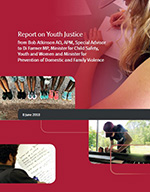
Children’s Rights Report 2017
The Children’s Rights Report 2017 was been launched in March 2018 and is publicly available on the Australian Human Rights Commission website www.humanrights.gov.au
This report outlines work the National Children’s Commissioner has undertaken throughout 2016-17 to promote the human rights of children and young people in Australia. The major focus of this report is on the rights and needs of young parents and their children. There is a total of 17 recommendations with only a couple that refer specifically to young people in detention.
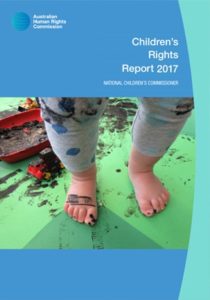
Reports of Interest From 2017
Youth Justice Effective Practice Guide
In November 2017, the Noetic Group undertook a piece of work for Prime Minister and Cabinet. While the Youth Justice Effective Practice Guide outlines the latest trends and statistics, its importance lies in identifying what effective practice looks like for the youth justice sector in Australia. We know that intervention models work, and regardless of which model is used, it is important that these interventions reach the right people and be implemented correctly.
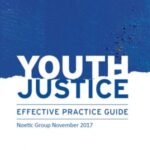
Royal Commission into the Protection and Detention of Children in the Northern Territory
On 28 July 2016, the Government established the Royal Commission into the Protection and Detention of Children in the Northern Territory. The Hon Margaret White AO and Mr Mick Gooda were appointed as the Commissioners. The Royal Commission was established to inquire into the treatment of children and young people detained in youth detention facilities administered by the Government of the Northern Territory, in particular the Don Dale Youth Detention Centre. The timeframe for the inquiry covered a ten year period “since” 1 August 2006.
The Commission was asked to hand down a Final Report by 31 March 2017. Due to the size of the task and the volume of documentary evidence and witnesses, the reporting date was extended three times to 17 November 2017. An interim report was delivered on 31 March 2017. The Interim Report provided a summary of work undertaken up to February 2017 which predominantly focused on youth justice and the youth detention system. At the time the Interim Report was being finalised the Commission was still holding public hearings pertaining to youth justice.
On 17 November 2017, the Final Report was handed down. The Final Report is 2,000 pages in length, is made up of 42 chapters and includes 300 recommendations. The report is the final product of:
- 54 days of formal public hearings
- 214 witnesses
- 1000+ exhibitions
- 18 recorded personal stories
- 6000+ pages of transcripts
- 12 case studies.
Each volume of the Final Report is available on the Royal Commission website www.childdetentionnt.royalcommission.gov.au
The overview is a condensed paper of the key findings and recommendations of the Final Report.
All findings and recommendations from the Final Report have been pulled together in a single document.
Royal Commission into Institutional Responses to Child Sexual Abuse
The Australian Royal Commission into Institutional Responses to Child Sexual Abuse (the Royal Commission) was the largest royal commission in Australia’s history measured by financial investment, length of operation, volume of evidence taken, number of Commissioners appointed and number of witnesses and submissions.
The Hon Justice Peter McClellan AM Chaired the Royal Commission and the other five Commissioners included Mr Bob Atkinson AO APM, Justice Jennifer Coate, Mr Robert Fitzgerald AM, Professor Helen Milroy and Mr Andrew Murray.
The purpose of the Royal Commission was to create a safer future for children and to provide justice for victims. It was established in 2013 with terms of reference that required it to examine how Australian institutions have responded to the sexual abuse of children. It was also charged with making recommendations for what institutions and governments should do to address and alleviate the impact of past and future child sexual abuse.
The Interim Report was released in two volumes on 30 June 2014.
On 15 December 2017, after almost five years, 57 public hearings and the production of 44 reports to government the Final Report was handed down. The Final Report contains 3,955 de-identified narratives based on survivors personal experiences of child sexual abuse, comprises 17 volumes and 189 new recommendations. Together with three other Final Reports released – ‘Criminal Justice’, ‘Redress and Civil Litigation’ and ‘Working with Children Checks’ – Commissioners have made a total of 409 recommendations.
The Final Report is available on the Royal Commission website www.childabuseroyalcommission.gov.au
All findings and recommendations from the Final Report have been pulled together in a single document.
Youth Justice Review and Strategy: Meeting Needs and Reducing Offending (VIC)
On 5 August 2017, the Victorian Minister for Families and Children released the Youth Justice Review and Strategy: Meeting Needs and Reducing Offending, conducted by Penny Armytage, former Secretary of the Department of Justice and Regulation, and Professor James Ogloff AM, Director of the Centre for Forensic Behavioural Science at Swinburne University. This is the first comprehensive independent review of Victoria’s youth justice system in over 16 years.
This review is intended to help guide work to strengthen and modernise Victoria’s youth justice system and is available on the Victoria State Government Justice and Regulation website www.justice.vic.gov.au
Behaviour Management Practices at Banksia Hill Detention Centre Report (WA)
The Behaviour Management Practices at Banksia Hill Detention Centre Report was publicly released in July 2017 and is available on the Office of the Inspector of Custodial Services website www.oics.wa.gov.au
This review examines behaviour management practices at Banksia Hill Detention Centre and the impact of the Banksia Hill Transformation project.
Review of Youth Detention Centres Report (QLD)
The Queensland Government publicly released the Review of Youth Detention Centres Report and the Government’s Response on 26 April 2017 (updated 28 June 2017).
NOTE: The publicly available report has been redacted due to the inclusion of confidential and sensitive information relating to young people in the original report. The report has been redacted in line with the provisions of the Youth Justice Act 1992. The report is available at www.youthdetentionreview.qld.gov.au
